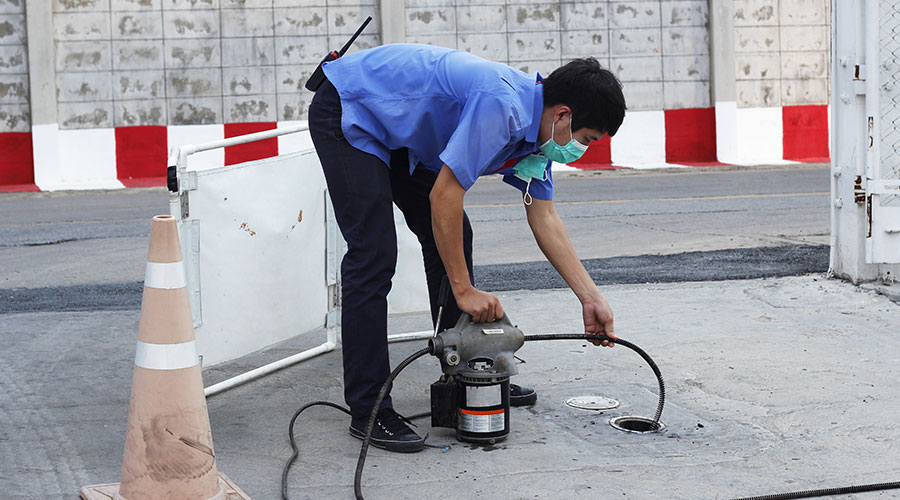« Back to Facilities Management News Home
« Power & Communication
Combined Heat and Power Could Replace up to 100 Percent of Retiring Coal Plant Capacity
Washington, D.C.: Utilities across the country could use highly efficient combined heat and power (CHP) to more cheaply replace a substantial portion of the coal-fired electric-generating capacity expected to retire in the near term, according to Coal Retirements and the CHP Investment Opportunity, a new report issued today by the American Council for an Energy-Efficient Economy (ACEEE). Today's report estimates coal retirements in 12 energy-intensive manufacturing states. Coal-dependent states like West Virginia, which expects to see up to 11 percent of its total electric-generating capacity retire, could replace about one-third of that lost generation with utility-owned CHP. Alabama and North Carolina could replace over half of their retiring coal plants with CHP. States with smaller levels of expected coal retirements, such as Kansas and South Carolina, could replace all of their lost capacity with CHP. Other states included in the report are Colorado, Georgia, Indiana, Iowa, Kentucky, Louisiana, and Ohio.
CHP systems use a single fuel source to concurrently produce electricity and thermal energy. Heat is a byproduct of most electricity generation-but while traditional power plants waste that heat by releasing it into the air or nearby water, CHP systems capture it and put it to productive use, such as generating steam that is then used in manufacturing processes. ACEEE's report analyzes the potential for new CHP at energy-intensive industrial and commercial facilities, and finds that by encouraging utilities to invest in CHP on customer sites, states could more easily meet future demand and offset some or all of the need to invest in new expensive power plants.
A typical new natural gas-powered CHP system can generate electricity at a cost of 6 cents/kWh, while the cost of new natural gas-powered traditional generation or nuclear-powered generation can range from 6.9 to 11.3 cents/kWh. CHP is not only more cost-effective than traditional centralized generation, but it is also cleaner and more efficient, squeezing more useful energy out of every unit of fuel. CHP can generate electricity and thermal energy at efficiencies of up to 85 percent, while the average electric generation efficiency of U.S. power plants is about 33 percent.
Coal-powered generation is becoming increasingly uneconomic due to several factors: the increased cost of coal; the decreased cost of alternatives like natural gas; an aging and inefficient coal fleet; and the impact of new and forthcoming air quality regulations, which aim to reduce toxic pollutants and other substances harmful to human health and the environment. An estimated 2 to 5 percent of U.S. electric-generating capacity will retire due to the above impacts, most of it in the form of older and smaller coal plants that were built over two generations ago.
"Our report suggests that instead of investing in new centralized power plants, utilities should invest in new CHP plants to keep costs down for their customers and generate much cleaner electricity," said Anna Chittum, the report's lead author. "Utilities around the country have expressed concern about the amount of coal-fired capacity they believe they will need to retire in the near future. Many are asking for substantial increases in customer rates to pay for new investments in traditional power plants when they could be investing in CHP instead."
"Unfortunately, most of the states that are facing substantial coal retirements currently lack the policies that would encourage utilities to invest in CHP," said Neal Elliott, Associate Director for Research at ACEEE. "Policymakers and regulators could help states meet their identified CHP potential by implementing policies that allow utilities to earn a rate of return on CHP like they do other capital investments."
An estimated $70 to $180 billion will be invested in new power plants or pollution controls for existing ones in the coming years. Rather than spend that money on expensive, inefficient, and dirty energy resources, utilities could spend it on new CHP systems at customer sites.
President Obama recently announced a nationwide goal of 40 new GW of CHP by 2020-a nearly 50 percent increase over the existing 82 GW of CHP in place today. ACEEE's report responds directly to this challenge.
"Now is the perfect time to work together to meet that national goal and lock in highly efficient electric-generating capacity for generations," said Chittum.
To download the report, visit http://www.aceee.org/research-report/ie123.
To learn more about CHP, visit http://www.aceee.org/topics/chp.
About ACEEE: The American Council for an Energy-Efficient Economy acts as a catalyst to advance energy efficiency policies, programs, technologies, investments, and behaviors. For information about ACEEE and its programs, publications, and conferences, visit aceee.org.
More From 12/17/2012 on FacilitiesNet







